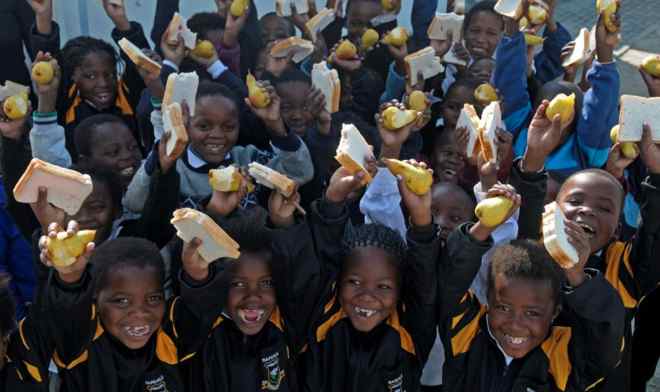Waste perfectly edible food and allow it to harm the environment… or rescue it and use it to feed the world’s hungry people?
It’s really an obvious choice. And, acting on this choice is the everyday work of The Global FoodBanking Network (GFN).
GFN is an international non-profit organization committed to fighting hunger and reducing food waste through food banking. GFN creates, supplies, and strengthens food banks and food bank networks around the world, in countries outside the US. Currently, the organization supports existing and developing food banks and national food bank networks in more than 25 countries, home to more than one-third of the world’s undernourished people.
A Proven Solution to Two Critical Issues
It goes without saying that food banks exist to feed the hungry. What’s not as evident – but equally as important – is that eliminating food waste and helping the environment is also at the very heart of food banking.
Food banking is about logistics: finding and rescuing perfectly edible, nutritious food before it goes to waste and getting it to where it is needed. Jeff Klein, GFN’s President and CEO, describes food banking as “two positive sides of the same coin.”
“There are two wonderful aspects to food banking. We are feeding people – which is good – and we are also choosing not to dispose of something that would have a negative effect on the environment,” said Klein.
Food loss and food waste happens throughout the food chain and food banks rescue and redistribute food at each stage. This intervention can include produce from farms and processors, packaged goods from manufacturers and stores, and prepared foods from restaurants and hotels. Last year, food rescue by GFN and network food banks kept more than 920 million pounds of food out of landfill and used it to feed hungry people. This is important from a humanitarian perspective, of course. It’s also beneficial to the environment as food in landfill produces methane gas, a greenhouse gas that is more than 20 times as potent as carbon dioxide in contributing to global warming.
Activating Global Goodwill on a Local Level
How does GFN get surplus food from one part of the world to a food bank in another? It doesn’t. Instead GFN works with global businesses and organizations to help them find ways to activate their global philanthropy on a local level.
Klein describes it as selling globally and delivering locally. “We don’t move surplus across borders. We look for the most efficient, economical, and environmentally friendly ways to connect surplus with need. Our global connections and local network structure makes this possible,” said Klein.
GFN establishes relationships with businesses, service and faith-based organizations, NGOs and others and finds ways for these good global citizens to support and supply food banks in areas where they do business and where their employees or members work and live.
GFN also works with food banks to find ways to recover and redistribute more food, more efficiently; for instance: moving a food bank closer to a produce market to take advantage of nutritious, perfectly edible food that does not meet the criteria for retail sales, organizing volunteer teams who are on call to glean excess crops from fields, and engaging global partners in the restaurant and hospitality industry to safely pack and deliver uneaten food to food banks instead of throwing it away.
“I think it’s safe to say that the problem of food waste, especially in a world where millions and millions of people are hungry, is universally unacceptable,” said Klein. “There is a new, concerted emphasis on eliminating waste in the food chain. But, no matter how much industry and agriculture can eliminate food waste at various points, there will always be surplus. And, there will always be people without access to food. This drives us to action every day. As food bankers, we are in the position to do something that makes a difference to people and the environment.”
Interested in learning more and helping fight hunger through food banking? Here are some ways to start:
View and share GFN’s Videos including: An Obvious Choice: How Food Banking Fights Hunger, Reduces Food Waste and Helps the Environment and our latest video, GFN: This Is Our Story.
Read more about how GFN is turning the environmental problem of food waste into a humanitarian solution to global hunger through gleaning and harvesting efforts, nutrition programs, innovative partnerships and collaborative efforts like the SAVE FOOD Initiative.
Be part of our community and help us make new friends: visit www.foodbanking.org to sign up for our newsletter, like us on Facebook and follow @foodbanking on Twitter.















